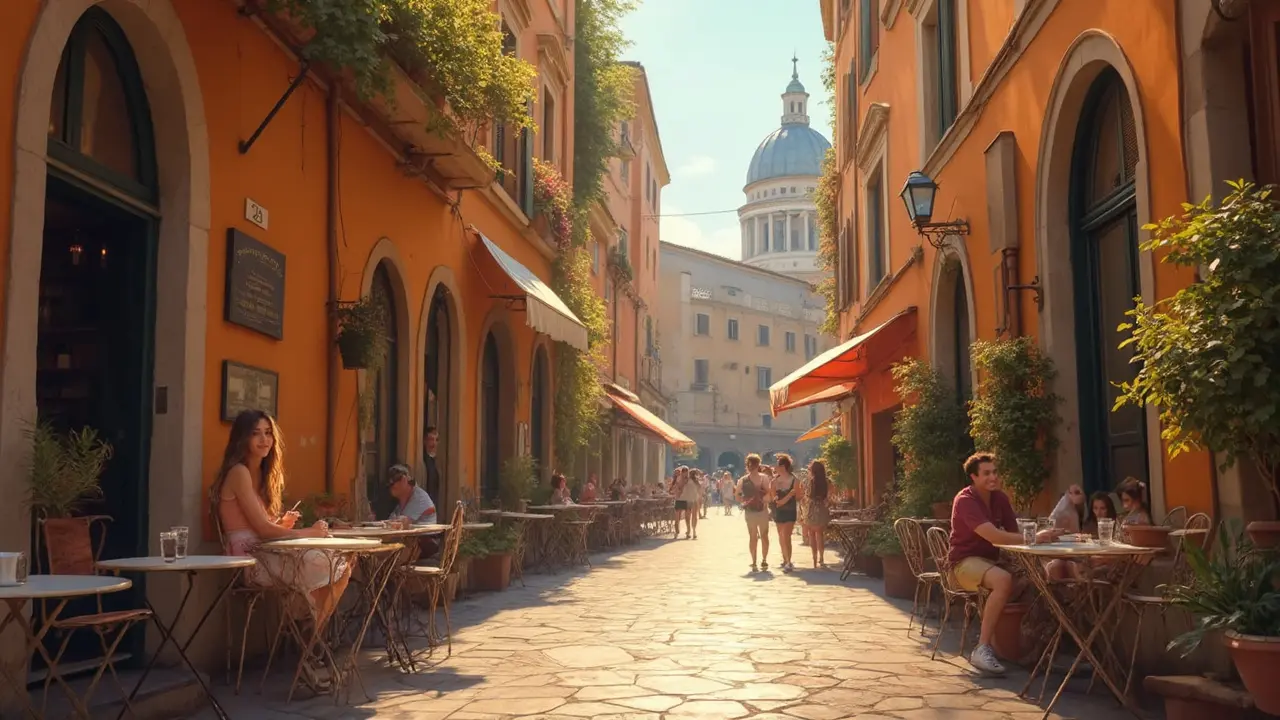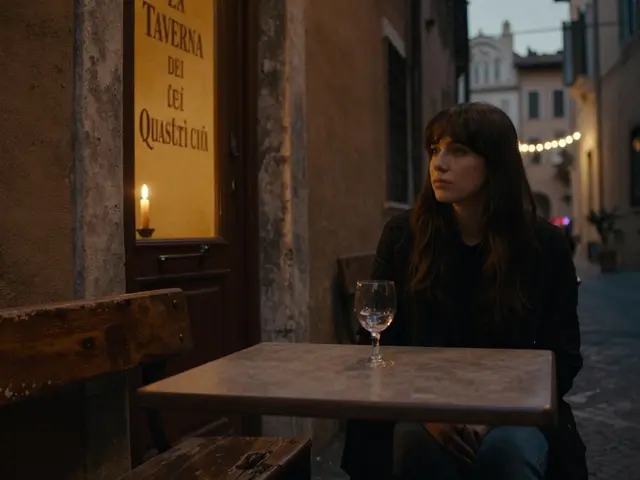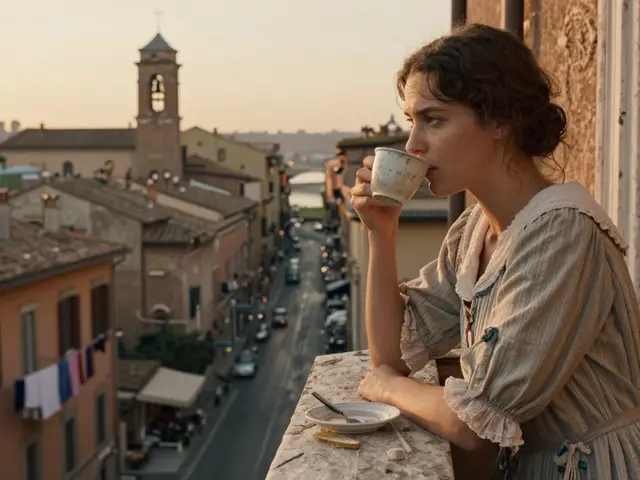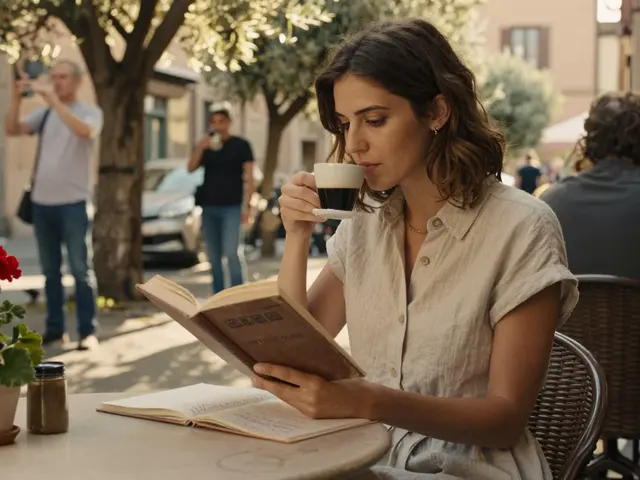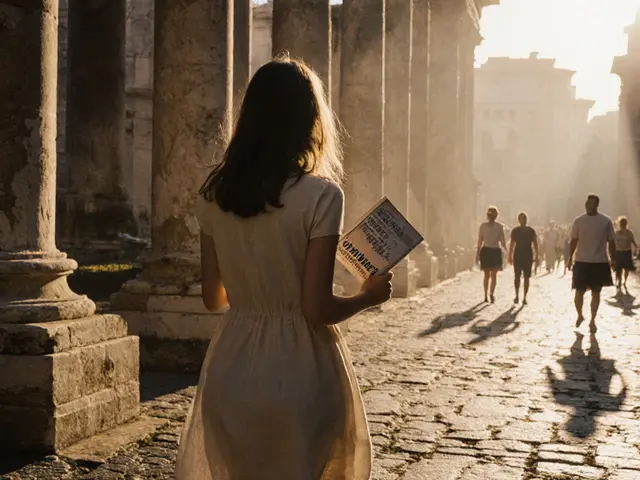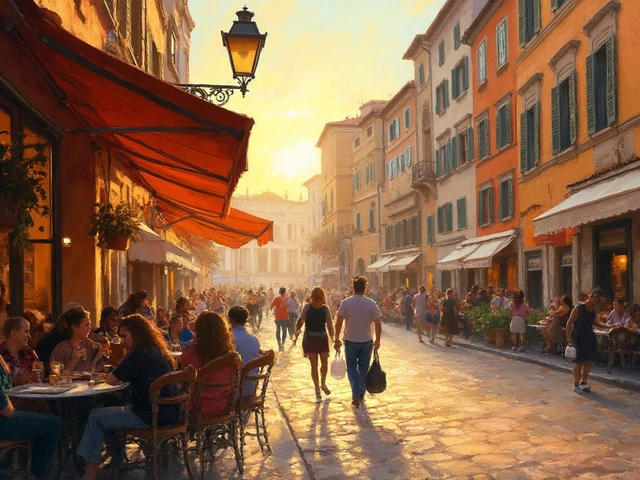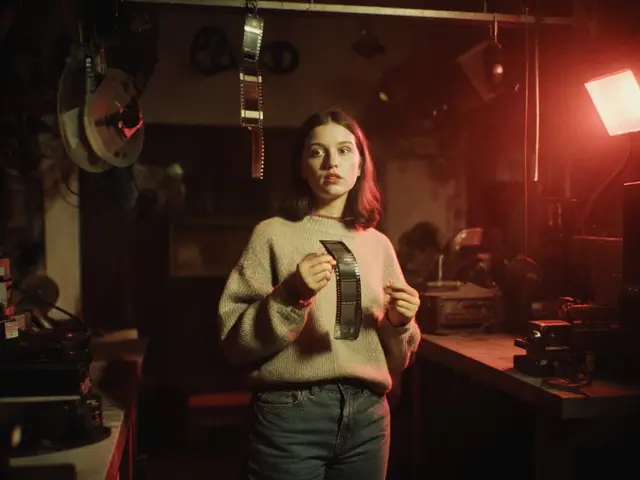Ever tried seeing Rome without drowning in tour groups? Rebecca Volpetti knows how to break away from the crowds. If you think Rome is just the Colosseum and a bunch of churches, you’re missing out. There’s way more to this city, and Rebecca’s favorite way to explore is on foot, weaving through tiny side streets where locals actually live their lives.
The trick isn’t making a giant to-do list of monuments; it’s about finding those lively piazzas where people sip coffee, or a bakery that still smells like fresh cornetti in the morning. Rebecca always tells friends: start your day early, before the selfie sticks come out. Early mornings mean you’ll catch the city waking up—honestly, it’s magical and about as close to the real thing as you get.
- Why Rebecca Loves Rome’s Streets
- Hidden Eats and Gelato Stops
- Rome’s Underrated Sights
- Practical Tips for Exploring Like a Local
Why Rebecca Loves Rome’s Streets
Rebecca isn’t just visiting spots from a guidebook—she actually lives the city, one neighborhood at a time. There’s something about Rome’s street life you just can’t find elsewhere, and she’s got real reasons why she’s hooked. Her favorite area? Trastevere. The vibe is young, the bars are full after sunset, and the streets turn into a mix between a hangout and an open-air dining room. She’ll tell you—the best way to get into the rhythm of Rome is to walk, not rush, and actually look up at the peeling orange paint and overflowing balconies.
Want to feel the city, not just see it? Rebecca always recommends skipping taxis when you can. Instead, walk from Campo de’ Fiori to Piazza Navona. It sounds simple but you’ll stumble into tiny shops, markets, and those random little fountains everyone snaps photos of (like the Turtle Fountain in the Jewish Ghetto—it’s not as crowded and has a legit local story tied to it). These aren’t tourist traps—they’re side streets people have used daily for generations.
Here’s the kicker: Rebecca says some of the best food, coffee, and conversation happen where Google Maps gets a bit confused. The cobbled streets around Via del Governo Vecchio are her go-to for a quick espresso, especially at spots that don’t even have fancy signs outside. You’ll meet actual Romans, not just other travelers. She’s big on urging visitors to stop and pay attention to what’s happening around them, not just what’s trending online.
For Rebecca, every corner in Rome tells a story. The way the sunlight hits Piazza Santa Maria in Trastevere late in the afternoon, or how you hear music drifting out from an old apartment, that’s what makes the city come alive. If you’re hoping for a real taste of Rome—not the glossy, packaged version—start by putting away the map and following your nose, your eyes, or even the smell of fresh pizza dough from around the block.
- Skip buses and try walking between major sights—sights are closer than you think, especially in the historical center.
- Look for lively piazzas and outdoor tables—these are usually packed with locals, not just tourists.
- Explore Trastevere, Monti, and Testaccio for authentic neighborhood vibes.
The real secret? Rome rewards curiosity. If you want to see why Rebecca always comes back, just wander. The energy hits different off the main tourist routes, and that’s where the memories stick.
Hidden Eats and Gelato Stops
If you’re out in Rome with Rebecca Volpetti, don’t expect her to follow the typical tourist food trail. She skips those crowded spots around the Pantheon and instead hunts for tavole calde—simple local lunch counters—and tiny trattorias where the menu is handwritten and only in Italian.
One of her favorite finds? Forno Campo de’ Fiori. Locals grab slabs of thin, crispy pizza bianca here. It’s cheap, warm, and better than most pizza you’ll get in touristy restaurants. Feeling adventurous? Duck down Via di Monserrato for Roscioli, a deli famous for carbonara that actually tastes like it’s supposed to—creamy, peppery, and never watery.
Of course, no Roman day is complete without a proper gelato stop. Rebecca swears by Fatamorgana in Trastevere for natural flavors (no fake neon colors here) and the classic Giolitti near the Pantheon, which has been scooping since 1900. The trick: avoid places with tall, fluffy piles of gelato—that stuff is pumped full of air. Real gelato is dense and usually kept in covered bins.
Here’s what to look out for when hunting food with Rebecca:
- Menus in Italian only. If there’s an English menu up front, walk away.
- People eating standing up—that’s usually a good sign for quick, tasty meals.
- Gelato that isn’t fluorescent. Pistachio should be pale green or brown, not bright green.
And just for fun, check out this quick rundown of gelato flavors Rebecca loves:
| Gelato Flavor | Where to Try |
|---|---|
| Pistachio | Fatamorgana |
| Stracciatella | Giolitti |
| Ricotta e Fichi | Gelateria del Teatro |
| Chocolate (Fondente) | Fassi |
To really experience Rome travel like Rebecca, steer clear of chains and plastic menus, and trust your sense of smell—and the people lined up outside a nondescript corner bar. Those folks know what’s up.
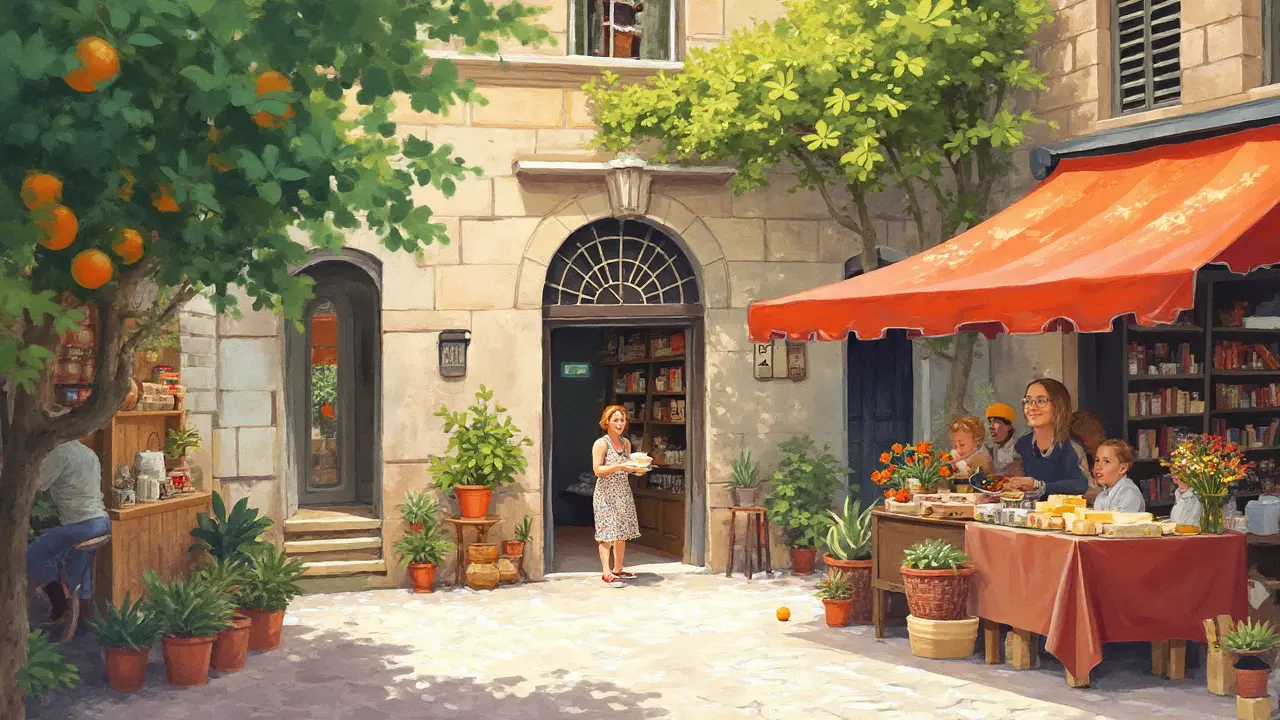
Rome’s Underrated Sights
You’ve heard about the Colosseum a thousand times. But Rebecca swears the real magic happens in places most visitors skip. Check out the Aventine Keyhole—it’s a tiny hole in a door on the Aventine Hill, but when you peek through, you get this perfectly framed view of St. Peter's dome. Sounds gimmicky, but you won’t forget it.
The Testaccio district gets a nod from Rebecca all the time. It’s got old-school markets and a pyramid (seriously, a real one: the Pyramid of Cestius). Not packed with tourists, and the neighborhood's full of genuine Roman character. Wander over to Cimitero Acattolico nearby—Keats and Shelley are buried there, and it’s peaceful, not gloomy.
If you love history without the crowds, the Baths of Caracalla hit hard. Massive ruins, huge mosaics, and zero lines. Local runners use the grounds for workouts—talk about running with history.
“If you want to understand Rome beyond Instagram, you have to get off the main roads. Every backstreet has a story,” says Rick Steves, the travel writer known for practical Europe tips.
Rebecca is big on outdoor art, so she recommends Centrale Montemartini. Picture ancient statues next to old machines from a power plant—old and new mashed together, and hardly anyone’s ever there.
- Rome travel tip: Some underrated landmarks are open late or even free on certain days—always check before you go.
- Try visiting places like the Villa Torlonia, where Mussolini once lived. The architecture’s wild, plus the park out front is great for picnics away from crowds.
- Ostiense Street Art is another hidden gem; the walls are covered in huge, colorful murals. Perfect for something beyond ancient ruins.
| Sight | Closest Metro | Entry Fee |
|---|---|---|
| Aventine Keyhole | Circo Massimo | Free |
| Baths of Caracalla | Circo Massimo | €8 (adults) |
| Centrale Montemartini | Garbatella | €11 (adults) |
| Villa Torlonia | Policlinico | €7 (museum) |
The point is, you don’t have to follow the typical tourist trail. Rebecca’s favorite sights give you the kind of stories you’ll actually want to share when you get back home.
Practical Tips for Exploring Like a Local
If you want Rome to feel less like a museum and more like real life, you have to ditch the strict schedules. Rebecca always suggests blending in, and that starts with the basics: walk more, plan less, and keep your phone tucked away. Romans take their time, especially in the morning, so don’t feel pressured to rush from place to place.
- Stay in a neighborhood like Trastevere or Testaccio. Hotels in the city center might look convenient, but you’ll actually get better food and friendlier vibes in areas where locals live.
- Take public transport like the Metro, tram, and buses. A single ticket costs €1.50 and is good for 100 minutes (as of 2025). You’ll get a sense of how the city really moves—plus, it’s way cheaper than taxis.
- Don’t eat near the big sights. Restaurants around landmarks charge more and the food rarely blows you away. Head three or four streets away from any major attraction for way tastier meals at normal prices.
- Breakfast in Rome is simple: grab a cappuccino and a sweet pastry standing at the bar. Sitting down often means you’ll pay extra for the same thing.
- Download an offline map—Google Maps or Maps.me are easy picks. Phone data isn’t always reliable inside old Roman alleyways.
Rebecca swears by these habits: slow down, eat well, and talk to locals. Even a little Italian goes a long way, and Romans usually light up if you try. Here’s a quick comparison of what you’ll likely pay in tourist traps vs. local spots (see table below):
| Item | Near Major Landmark (€) | Residential Neighborhood (€) |
|---|---|---|
| Espresso | 2.50 | 1.20 |
| Pizza al Taglio (slice) | 6.00 | 3.50 |
| House Wine (glass) | 7.00 | 3.00 |
| Carbonara | 15.00 | 9.00 |
If you remember anything, let it be this: Rome comes alive in its corners and conversations. Follow what locals do, and you’ll have a way better time than just checking off monuments.
Want to feel like you’re living here, not just visiting? That’s the Rome travel vibe Rebecca always goes for—and it works every single time.

